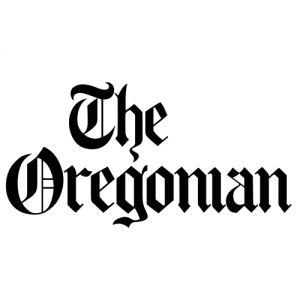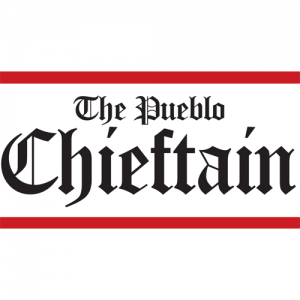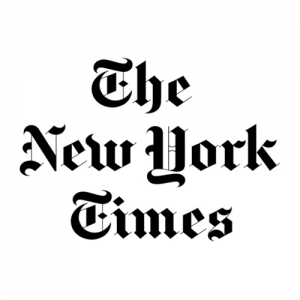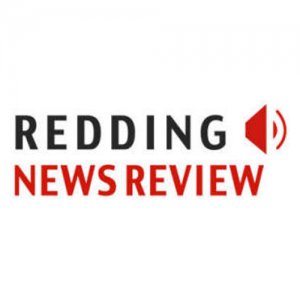
On election night I watched Barack Obama give his victory speech in Grant Park, cheered on by millions of Americans across the country. They were celebrating the fall of barriers – racial barriers, cultural barriers, partisan and political barriers. As I watched, I thought about the independents and the 20 years we’ve spent fighting to tear down those barriers in our movement, so that we could help the country to turn the political page.
Analysts will look back at the campaign and highlight what they deem to have been the turning points. They will tell you, for example, that the South Carolina primary in late January was a watershed moment, when a majority of black voters moved to Obama’s side and he defeated Hillary Clinton. But the official analysts are short on the details of what was occurring on the ground, the pivotal moments when the words and actions of independents produced change from the bottom up.
On election night I thought of Wayne Griffin, a long-time African American independent, the leader of the South Carolina Independence Party who has spent 20 years building political coalitions between the black community and white independents. Wayne played that role again in the South Carolina Democratic primary, when he stepped out to say that African Americans and white independents should be going for Obama in the state’s open primary. And they did. He knew that such an unusual coalition could come together around the need to change the nature of the political process itself because he’d seen it happen in the independent political movement. He brought his experience and vision to the table when it mattered most.
I thought about Mitch Campbell, the founder of the American Independent Movement in Idaho, who shaped our federal court case there to save open primaries and preserve the rights of independent voters. Mitch called me one day, as the Idaho Democratic caucuses (open to independents) were approaching, and said to me: Jackie, it’s time for independents to go for Obama. He reached out with that message to show America that in the reddest (and whitest) of red states, independents would support a black progressive for president.
I thought about Russ Ouellette in New Hampshire, who sat across the table from Obama just weeks before the New Hampshire primary. In a dialogue about nonpartisan government, with TV cameras recording the conversation, Obama said: “If there’s a Republican out there who is the best person for any particular Cabinet position or any administrative agency that’s going to make a difference, then I will make that appointment.” Russ replied, “That’s great. But I don’t think being independent means just reaching across to Republicans.” And Obama replied, “Well, that includes independents. I mean, independents even better.”
Twenty-nine percent of Americans who voted in the 2008 election are independents. In the election those voters said some things – not just about a new direction for our country, but about themselves. If you listen to what they said, you discover that independent voting is changing, taking on a more organized and progressive dimension. What follows is a narrative of that change, a story of how a contemporary political eruption that began on the center-right with little connection to communities and concerns beyond its borders developed into a culturally and racially diverse movement on the center-left and elected the first black President of the United States.
1. The Independent Vote in 2008
In the 2008 presidential election over 128 million Americans cast ballots, sending Barack Obama to the White House with a popular vote mandate of 53%. (John McCain received 46% of the popular vote.) Obama carried every region in the country (the Northeast by 57%, the Midwest by 54%, the West by 55%) but the South. The shift in the popular vote from Republican to Democrat since 2004 was a 10-point swing, as Obama wove together a new national coalition that swept a majority of women (56%), voters under 45 (he took 69% of first-time voters), blacks (95%), Latinos (67%), moderates (60%), most income and educational background groups, and independents.
Obama polled 52% of the independent vote as compared with McCain’s 44%, strong evidence that independents have become more progressive than conservative. (In 2004 independent voters split nearly evenly, 49% going for John Kerry and 48% for George Bush.) The relative size of the independent voting bloc was higher. Twenty-nine percent of the electorate were independents, up three points from 26% in 2004. (The Democrats’ share went up by two points; the Republican share dropped by five points.) And in another notable change in the independent demographic, 6% of the overall electorate were independents of color – African American, Latino, Asian American and Native American. Seventy percent of those voters chose Barack Obama.
Gone are the days when independent voting was the sole province of the “angry conservative white male.” It is estimated that more than 20%, or one in five, of the independents who voted for Obama on November 4 are people of color. While national exit polls show that white independents split between Obama (47%) and McCain (49%) – with white voters overall breaking for McCain (55% to 43%) – in some of the most hotly contested battleground states that Obama carried, independents of all hues voted for him. In Ohio, they supported Obama over McCain 52% to 44%. In Pennsylvania, 58% of independents were Obama voters. In Florida, 52% backed him. In Indiana – where a Democratic presidential candidate hasn’t won for 44 years – 54% of independents supported Obama, providing the margin of victory in his one-point win over McCain. In New Hampshire, 59% of independents backed Obama. Fifty-six percent of New Mexico independents and 54% of independents in Nevada supported him as well.
In several states that went for McCain, Obama still carried or split independents. Notably, McCain’s home state of Arizona was one of these. There, 51% of independents backed Obama, a pointed reminder of the extent to which McCain turned his back on his own history of maverick independence to be the Republican nominee.
Some 19.3 million independents cast ballots for Obama, nearly the size of the vote for Ross Perot in 1992. This number in and of itself should make the pundits (or at least Larry King!) sit up and take notice. But the story of the independent vote for Obama is about much more than the numbers. A closer look at the evolution of the independent voting bloc – from a center-right uprising fomented by the mercurial billionaire Perot to a diverse and decentralized center-left movement for political reform that carried Obama to his victory in the Democratic primaries and subsequently played a decisive role in his general election coalition – reveals just how important that shift was to the outcome of this historic election.
How did such a shift occur? It is, in part, a matter of changing times, changing demographics, changing technology and spectacularly high levels of distrust in political parties and Beltway politics. It has also been propelled by small but highly organized networks in the independent political movement, which helped to re-route the trajectory of non-aligned voters to the left while replacing the operative paradigm within the organized independent political movement itself.
The new paradigm reworks the premise that independents best (or only) express their interests by voting for independent or third-party candidates. The new paradigm, largely pioneered by IndependentVoting.org, the online counterpart of the Committee for a Unified Independent Party (CUIP), appeals to independent voters to leverage their power through shifting tactical alliances with candidates based on their support for the independent agenda and regardless of their partisan affiliation. The gradual movement to the center-left, together with a shift in tactics, ushered in a kind of realignment in the independent movement, which in turn found expression in broad-based support from independents for Obama.
2. The Shift in the Politics of the Independent Vote: Some Factors That Broadened the Vision of the 1990’s Independent Movement, Including the Challenge to Centrism.
During the Perot era, most progressives wrote off the emergent independent political movement as “too far to the right.” But CUIP’s founders – progressives who had built a base for independent politics in the black, Latino, gay and left communities in the 1980s – wanted to experiment with new kinds of left-center-right coalitions, which included African Americans and other communities of color. Without the constraints of partisan divisions, in a distinctly nonpartisan environment, new coalitions among independents might be possible. Put another way, the rightward leanings of the Perot-style independent movement might not be fixed in stone, especially if the political and cultural embargo by the left could be broken.
Accordingly, as the Perot movement began to regroup post-1992, a far-flung network of Perot activists, who were seeking to transform their electoral earthquake into an ongoing national political party, found willing partners on the progressive side of the independent aisle. A year of exploratory left-right dialogues and joint events were spearheaded by Nicholas Sabatine, the Pennsylvania attorney who had run the Perot effort in the Keystone State, with Lenora Fulani, America’s leading black independent, who in 1988 had become the first woman and the first African American presidential candidate ever to be on the ballot in all 50 states, her chief strategist and political mentor Fred Newman, and this writer. Not unexpectedly, the road to founding that national party was bumpy, even detoured at times.
A party-building meeting of the Federation of Independent Parties (FIP), convened by Perot’s pollster, Gordon Black, pointedly excluded Fulani and her supporters. The exclusion of the Fulani forces was, according to Black, a necessary condition for creating what he envisioned as a “centrist party.” Progressive and African American independents were not, in Black’s view, the target population for a voter revolt against the political status quo. Based on his analysis, articulated in The Politics of American Discontent – How a New Party Can Make Democracy Work Again, published in 1994 just as the FIP process was getting underway, a new political party that would restore pragmatism and democracy to the American political process would be formed by white moderates peeled away from both the Republican and Democratic parties. In his book, Black argued that under this arrangement, “The Democratic Party could become the true champion of minorities, the poor, and the public employees unions, with the liberal wing in power.”
In other words, blacks and progressives should stay behind in the Democratic Party, leaving the new reform movement to be led and actualized by moderate whites. Fred Newman was particularly outspoken against the centrism thesis. In his view, not only was Black’s model racially discriminatory and politically sectarian, it relied on the premise that there was, in fact, a “political center” in American politics – a place of permanent moderation to which most Americans gravitated. For Newman, a Stanford-trained philosopher and postmodern change theorist, a prevailing characteristic of the times, manifest in the Perot rebellion itself, was that the “center” was failing to hold. Attempts to recreate one would only meet with failure, as there was no longer any social or economic basis for it. The Perot rebellion, and the overall disalignment from the major political parties, were not indicators that Americans were searching for a “center” – in between the ideologically left Democratic Party and the ideologically right Republican Party. Instead, according to Newman, the emergent independent impulse was away from ideology and partisanship altogether, creating the potential for new coalitions of the left and right in support of nonpartisan political reform.
The idea that the Perot movement might broaden its borders and that the base for a new political party should be politically and culturally heterogeneous met with resistance. But after Sabatine was selected by the FIP conference to oversee the founding of a new national party, he established objective criteria for qualifying delegates to a founding convention. One consequence was that Fulani and Newman, with whom Sabatine had become friendly, brought a sizable delegation to the founding convention of what became the Patriot Party in Arlington, Virginia. This gave an entirely different (multi-racial and progressive) twist to the affair.
At the Patriot Party convention, African American youth wearing Malcolm X tee-shirts (this was still the pre-Obama era!) sat at tables alongside Perotistas sporting tricorner hats and other American Revolutionary paraphernalia.
But the cultural strangeness of the event only seemed to deepen the sense of collective empowerment. As convention deliberations got underway, one delegate moved to strike the term “centrist” from the party’s draft mission statement on the grounds that it was exclusionary. The motion carried with broad support. Gordon Black, present at the convention as a delegate from New York, stormed out.
Aware that the strength of Fulani’s delegation meant that she could be elected to any officer position of her choice, and afraid of the controversy that would thereby surround the fledging party, Sabatine asked that she refrain from seeking any official position. Fulani and Newman agreed, while nominating key allies to national executive committee posts. Among them was California’s Jim Mangia, who would later help to influence Perot’s decision to form the national Reform Party.
After Sabatine was elected chair, Fulani was nominated for vice chair. In declining, she told the assembled delegates that she would always put the interests of the movement and the country ahead of her own. The convention erupted into thunderous cheers and applause. A black and independent alliance was making its first appearance on the political stage, with an African American progressive as its popular voice. Moreover, the “centrist” model of independent politics had been roundly repudiated by the delegates.
Five years later, there was much water under the bridge: the Patriot Party’s successful effort to persuade Perot to reorganize United We Stand, America into the national Reform Party with which Patriot would eventually fuse; the hotly contested Reform Party presidential primary between Perot and the liberal former Colorado governor Dick Lamm; Perot’s second presidential run in 1996 with economist Pat Choate as his vice presidential running mate; the formal creation of the Reform Party following the election (Patriot dissolved itself into Reform in 1996); and Jesse Ventura’s election as governor of Minnesota in 1998. But by 1999, with Bill Clinton’s second term drawing to a close, the Reform Party had come to a crossroads.
Reform had become a national political entity with ballot status parties in over 30 states. It stood to receive $18 million in federal funding for its 2000 presidential candidate. While Perot was bowing out, the ranks of the party were chafing at the increasingly tight-fisted control exerted by Perot’s circle in Dallas. Fulani and the CUIP networks, meanwhile, were a significant rank-and-file force inside the party, with sizeable – though minority – representation on the National Committee. (Mangia was the party’s national secretary.) At the party’s 1999 national convention in Dearborn, Michigan, the Dallas group intended to transfer power (the chairmanship and vice-chairmanship) to Perot loyalists, believing they had the votes for an easy win.
Meanwhile, the pro-democracy forces were searching for ways to overcome Dallas control and expand the base of the movement. The Ventura camp, critical of Perot’s governance, was isolated inside the party but had an outsize megaphone thanks to Ventura’s high profile.
Ventura had chosen a candidate for chairman, Jack Gargan, to contest Perot’s control. But the Ventura forces did not have anywhere near the requisite support among convention delegates to prevail. Fulani’s base of support, meanwhile, had grown. The black leftist was held in high regard by a cross-section of delegates; they viewed her as an honest broker who had integrated the party, largely without acrimony, while rejecting identity politics in favor of an inclusive, populist, pro-democracy vision. Uniquely, she had ties to all camps inside the party.
Ventura, prevented from flying into Dearborn by a sudden rainstorm, telephoned into the convention to nominate Gargan. Two Perot stalwarts were also nominated for top positions as the convention delegates debated the best way forward for the party. In a private meeting, Gargan asked Fulani for her support. She, in turn, asked that her chief lieutenant, Cathy Stewart, be appointed head of the Party Building Committee in a Gargan administration, charged with expanding the party’s base at the grassroots, a mission that had been long neglected by the Perot regime. Gargan agreed. Fulani and Stewart began quietly putting the word out that they were supporting Gargan.
The Dallas contingent did not grasp what was happening until it was too late to respond. Amidst an uproar on the convention floor, Gargan was elected party chairman and Dallas was toppled.
But the surprises weren’t over. Fulani’s name was placed in nomination for vice chair and Dallas struggled feverishly to recoup. Calling in chips across the floor, after several ballots they mustered 55% of the vote for the Perot loyalist. But Fulani had polled 45% of the vote of the majority white and center-right convention, suggesting that ideological and racial boundaries were not as rigid as they might appear. Obama would make historic use of that insight nine years later.
The left-center-right pro-democracy uprising in the Reform Party was put down in short order. The Dallas forces regrouped, drove Gargan out of the chairmanship in a matter of months, and brought in conservative Republican-turned-independent presidential hopeful Pat Buchanan to become the party’s standard-bearer. After a season of shifting alliances (including a brief attempt at a right-left partnership between Buchanan and Fulani), Buchanan was declared the Reform Party nominee in time to preside over the party’s implosion. He polled under half a million votes.
The Reform Party was not the only third-party casualty of 2000. The other independent force making a bid for mainstream influence was the Green Party, whose nominee, Ralph Nader, had set as a goal for his presidential bid garnering 5% of the national vote. This would have given the Greens national party status and made them eligible for federal funding in the 2004 presidential election. Nader fell short, polling 2.7%.
The public furor over Florida and the charge that Nader cost Al Gore the election sent many high-profile left-wing Nader supporters rushing back to the Democratic fold. But the intra-left acrimony served to obscure the deeper problems with the Green party-building strategy. The energy of the anti-partisan voter bloc was growing post-Perot. But it was not gravitating towards a third party, Reform, Green, Libertarian or otherwise. The largely sectarian efforts of the Greens and Nader to channel it in that direction had fallen distinctly flat.
With increasing numbers of Americans disaligning themselves from any political party, CUIP strategists sought to develop an approach to independent organizing that reflected on-the-ground realities. Most organized elements of the independent movement (Greens, Libertarians, the remnants of Reform, the Constitution Party) were stuck in the party paradigm, notwithstanding its obvious failures. Meanwhile, the mass of independent voters – 35% of the electorate – did not have a defined voice in the political process. The CUIP insight was, in many respects, simple. Couldn’t “swing voting” by independents be harnessed? Couldn’t independents begin to choose candidates based on the options and circumstances in a given election, and use these coalitions to elevate the power of independents? CUIP’s networks began to test that approach.
3. From 2004 to 2008: New Politics and New Tactics
As the war in Iraq began to alarm growing numbers of Americans, independents, too, started to question U.S. policy there. In the summer of 2003, 59% of independents believed going to war was the “right decision.” Two years later a majority, 53%, were “negative about the decision to go to war.” The short-lived but electrifying 2004 presidential primary campaign of Howard Dean – supported by younger and independent voters, including many in the CUIP networks – suggested that a sea change might be underway. But once Dean was forced out of the race by the “always searching for the center” Democratic Party establishment, the opportunity for a Dean/independent coalition was foreclosed. Meanwhile, Nader was floating the idea of another presidential run, but this time based on a different model.
Two years earlier Jim Mangia had presented Nader with a strategy memo in which he outlined an alternative approach to an independent presidential campaign. Mangia argued that if Nader ran again, he should not run as a Green Party candidate, or as the candidate of any other single party. Rather, he should mount a coalitional candidacy to unify diverse elements of the independent movement. Mangia and CUIP felt strongly that traditional ideology-based third-party strategies had run their course. And in late 2003, as the Dean candidacy was destructing, Nader reached out to Mangia. He was seeking CUIP’s support for a coalitional run.
Nader appeared at CUIP’s “Choosing An Independent President” conference in New Hampshire in January 2004, when 400 delegates from 35 states assembled to assess best options for the 2004 presidential election. George Bush was not an option. The second and third tier Democrats, including John Edwards, Wesley Clark, Dennis Kucinich and Al Sharpton, were already on the wane. With Dean out of the picture and the centrist Kerry on the ascent, a partnership with the pro-war Democrats was less and less appealing. Nader made his independent pitch and was well received. While in New Hampshire, Newman, Mangia and I held a private meeting with Nader during which Newman asked Nader for assurances that the Greens, who had been hostile to Nader’s decision to follow the CUIP blueprint, would not be allowed to play a disruptive role in the coalition. At first, Nader acted surprised at the notion, but later agreed to do what he could.
The CUIP networks energetically supported Nader, while CUIP’s election attorney Harry Kresky was deployed to aid him in what became an avalanche of ballot access challenges against his candidacy, led and coordinated by the Democratic National Committee. The Greens, not unexpectedly, balked at Nader’s coalition plan and nominated David Cobb, whose “safe states” strategy was designed to avoid any repetition of the spoiler scenario. The Greens’ national vote total plummeted to 119,859. CUIP leaders brought the New York Independence Party and the South Carolina Independence Party into the fold for Nader, while the remnants of the Reform Party backed him, too. He polled 465,650 votes. As noted earlier, independent voters overall split between Kerry and George Bush.
Meanwhile, big news in independent politics was happening locally, particularly with respect to the emergence of new political coalitions. In 2005, CUIP leaders in New York (Fulani, Newman, Stewart, Kresky and I) were the architects and organizers of a history-making change in voting patterns: our endorsement of then-reformer Mayor Mike Bloomberg on the Independence Party line resulted in an astonishing 47% of the African American vote and 60% of the independent vote for his re-election. A black and independent alliance had dealt a body blow to the city’s entrenched Democratic machine.
A year later 59% of independents voted for Democrats in the midterm elections, largely on the basis of opposition to the war, thereby giving the Democratic Party control of Congress for the first time since 1994. The stage was set for the 2008 presidential race and for CUIP to pursue the best partnership for independents.
4. Open Primaries Fuel the Black and Independent Alliance
Hillary Clinton had voted for the war but believed that dissatisfaction with Bush policies could fuel a Democratic victory. Clinton’s political instincts and strategies were those of a partisan. She had disastrously bad relationships with the independent movement, having gone so far as to try, unsuccessfully, to have Fulani and her allies excised from the Independence Party of New York in the hopes of returning it to the center-right where it had originated in Perot’s heyday.
Obama, on the other hand, opposed the war. A self-described post-partisan, he recognized that independents were emerging as a crucial swing force and that, unlike in the 1990s, this constituency was now in motion towards the center-left. The increasingly multi-racial character of the movement, its natural attraction to a vision of changing the culture of politics, and the decline in its political xenophobia meant that he could appeal to a broad cross-section of those voters. Independents in the CUIP networks found a hospitable response from the Obama campaign as numerous state organizations reached out to query his level of interest in connecting with the independent movement. That 33 states would hold Democratic (and Republican) primaries or caucuses in which independents were allowed to vote accelerated the intersecting of the CUIP strategy and the Obama strategy.
Obama carried independents in Iowa’s open caucuses and again in New Hampshire’s open Democratic Party primary. But in New Hampshire, more independents than expected chose to vote in the Republican primary and broke heavily for McCain. While this resuscitated McCain’s campaign and set him on the path to the Republican nomination, it also deflated Obama’s independent edge over Clinton, who won the Granite State primary. The next major proving ground was South Carolina, an important open primary state.
The Clintons were counting on South Carolina to be their firewall with black voters. Many black churches acted as a Clinton echo chamber, re-enforcing the idea that this was “Hillary’s Time.”
Wayne Griffin, an independent on the city council in Greer, heard the Clinton drumbeat and thought the odds might be in her favor. But Griffin deeply disliked the Clintonian style of politics. Under the banner of the newly formed Independents for Obama, he ran radio commercials across the state promoting this message:
I’m Wayne Griffin. I was born and raised here in South Carolina. I have a family, I run a small business and I’m part of a growing movement of African American independents who want to get beyond the same old political games.
There are a lot of people like me – who are independent in their political views; who think insider politics in Washington and Columbia have to change. Among younger African Americans, over 35% consider themselves independents, and don’t relate to the “win at all costs” style of elections.
Independents can vote on Saturday and we’ve got a lot of reasons to do so. The Democratic Party establishment – now run by Bill and Hillary Clinton – sees the country in terms of old labels, old coalitions and old tactics. They think change comes from the top.
But the change I am a part of is coming from the bottom. It’s coming from ordinary people, young people, and politically independent people. Barack Obama has spoken out for that kind of change and that’s why so many independents like me are supporting him.
If we want to change the direction of our country, we have to change the way we do politics. It’s that simple.
Obama won the South Carolina primary handily, with 78% of the black vote and a plurality (42%) of the independent vote. (John Edwards polled 32% and Clinton 26% of independents.) The Clinton firewall had collapsed. More importantly, the first state in the line-up with a significant black population had made visible the new black and independent coalition that would carry Obama to victory.
After South Carolina, exit polling picked up a new trend for the first time in a number of Super Tuesday states. In Massachusetts 33% of black voters who cast ballots in the Democratic primary self-identified as independents. In Missouri it was 18%, Connecticut 22%, California 14%, New Jersey 13%, in Tennessee 17%. Among black independents, Obama’s support was astronomical. In Georgia, where 12% of all African American voters in the Democratic primary were independents, 97% went for Obama. The Black Independent, which Fulani, Griffin and others had been organizing as a new constituency, became a recognized category of voter.
Iowa, New Hampshire and South Carolina carried things to the tipping point. Outreach to and from the Obama campaign brought many CUIP state organizations into line with the idea that the most fruitful coalition was with Obama and his supporters. Mangia, widely recognized as California’s leading independent, endorsed Obama with significant results. Although Clinton won the state, 58% of California independents backed Obama. In Missouri the split among independents for Obama over Clinton was crushing – 67% to 30%. In other open primary states Obama won self-identified independents handily: in Georgia, he won 63% to Clinton’s 33%; in Illinois, he won 72% of these voters to Clinton’s 22%; in Virginia, Obama won 69% to Clinton’s 30%; in Mississippi, he won 53% to 43%; in Indiana, he won 54% to 46%.
In the 33 states that held open primaries or caucuses, 65% of independents chose to vote in the Democratic contests. Of those, 60% – or 2.7 million independents – voted for Obama. Many in the CUIP networks were there, on the ground, calling independents’ attention to the rules that allowed them to vote and backing Obama in those crucial open primary and caucus states. Obama’s margin in the popular vote was 281,370 out of a total of almost 33 million cast. If all primaries and caucuses had excluded independents, Hillary Clinton would have won the popular vote (not counting Florida or Michigan) by 373,910.(1) Independents were his clear margin of victory, making Obama the first Democratic Party presidential nominee in history to clinch the nomination with the support of an outsider movement. Arguably, the core strength of the Obama primary win came from a black and independent alliance – the very coalition envisioned, test run and marketed by CUIP.
5. New Conversations on Race
Obama’s sensitivity to the challenges inherent in creating multi-racial electoral alliances that are not traditional liberal coalitions – where conflicts and tensions tend to be submerged – came to the forefront in the controversy around Rev. Jeremiah Wright. Obama responded deftly, breaking down the particularities of the black experience in America, the resentments on both sides of the color line and the opportunity to create a new and different kind of national conversation about race.(2)
On a smaller and less publicized scale, the independent movement has built on these kinds of cultural and political conflicts (and the efforts to opportunize off of them) since we first began to bring the Perot movement together with the black community. Conversations about the common interests of the “overtaxed and the underserved,” about not being overdetermined by past resentments, were part of bridging the cultural divide in the Patriot Party, the Reform Party and in creating the independent coalition that backed Mike Bloomberg’s mayoral runs in New York City in 2001 and 2005.
In keeping with the unorthodox paradigms of the independent movement, Obama did not invoke notions of centrism or “restoring a political center” during the campaign. To the contrary. In the Democratic primary, he ran directly against Clintonian centrism. And he exhorted the American people to go beyond existing political categories to a new kind of pragmatically oriented change.
While the Republican opposition attempted to brand him as a “socialist” in an effort to foment a backlash against him, he was well served by the prevailing notion that black America is fundamentally conservative. No one believed he was a socialist. Moreover, the “class warfare” gambit was going nowhere. Race, not class, is the defining feature of American politics. Thus Obama, as an African American, was uniquely qualified to present himself as the healer of America’s deepest fault line. Consequently, with the full support of black America and with the independent movement having made a small but significant turn to the left, he was able to draw on a new paradigm to create a new political majority.
6. Going Right to Go Left
On November 4 independents asserted their place as a prominent element of the Obama coalition. The independent vote for Obama was eight points ahead of the independent vote for McCain, giving Obama over 19 million of his 65 million votes.
Unlike the more traditional players in the independent movement, CUIP had not gone out in search of either an ideologue or a billionaire to run on a third-party ticket. We created an up-from-the-bottom process through which we could connect to a candidate who was, in turn, shaped by our movement and who materialized a new alliance for transforming the body politic.
Understanding how America has changed entails understanding how the independent movement has changed. To do that, you have to look at the new concepts of independent politics and how they were engineered and developed in and by the CUIP networks. The “centrist” model was discarded early on in favor of a left-right coming together for nonpartisan reform. The reliance on a “great man” (Ross Perot, Ralph Nader, Jesse Ventura) or a rich man (Ross Perot, Mike Bloomberg, Tom Golisano) or an ideological man (or woman) (Ralph Nader, Cynthia McKinney, Bob Barr) was also discarded. In 2008, that paradigm failed to impact. The four major minor presidential candidates – Nader, Barr, McKinney and Chuck Baldwin – together polled a little over 1.6 million votes, or 1.2% of the vote nationally.
The paradigm that prevailed, which allowed independents to play a vital, even decisive role in the most significant “hinge” election since 1932, was the CUIP paradigm.
How did the independent movement go left? It did so by going right. When a network of progressives joined the Perot movement to create new models of cooperation (like the left-right partnership and the black and independent alliance), new paradigms for organizing (without a party or a patron), and a new framework for political reform (open primaries), a new era of independent politics began.
Now analysts are busy determining whether the Obama win represents a full-blown political realignment, whether that realignment is “hard” or “soft” and whether the election results portend Democratic Party dominance for a generation.
This much is clear. The independent movement, realigned from center-right to center-left, gave Barack Obama the edge he needed to realign the Democratic Party, away from Clintonian centrism to a black-led nonpartisan movement for change. Thus realigned, the Democratic Party, with the continued support of independents, defeated conservatism and realigned the country.
How durable is that realignment? Impossible to know, but there are lessons to be learned. Now that Hillary Clinton, on her way into the Obama Cabinet, is enshrined as a partisan relic of the old style of politics, somewhere in this country are the next hopefuls who will want to become the first female, or Latino or gay president. A word to the wise: Keep your door open to the independents.
________________
(1) This impact analysis of independent voters is based on exit poll data furnished to the media by Edison Research Associates. The data are available on major political websites (e.g., CNNPolitics.com, MSNBC.com) Pollsters asked a statistically valid sample of presidential primary voters: “No matter how you voted today, do you consider yourself a Democrat, a Republican, an independent or something else?” Data were compiled on what percentage of the participants in the primaries self-identified as “independent or something else” and for which candidate they voted. The above analysis is an arithmetic extrapolation of this data, computed in the states whose Democratic presidential primaries were open to independents.
(2) For a fuller discussion of this subject see the chapter by Dr. Omar ALi to appear in T. Denean Sharpley-Whiting, ed., The Speech: Race and Barack Obama’s “A More Perfect Union” (New York: Bloomsbury; 2009)
Read the original article here






